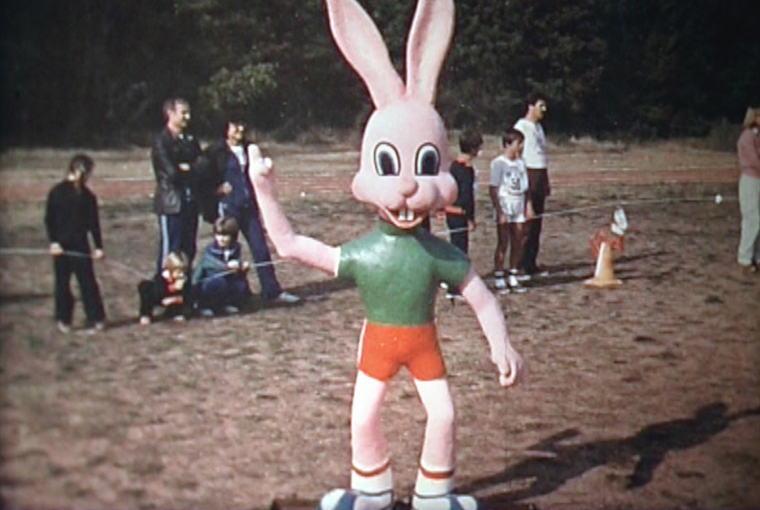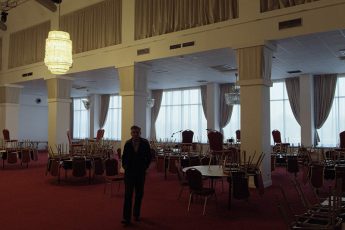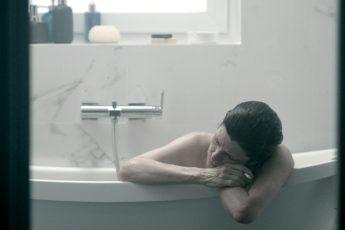On the Record
Bojina Panayotova’s I See Red People (Je vois rouge, 2018)
Vol. 82 (February 2018) by Zoe Aiano
The Bulgarian “Dossier Act” enacted in 2006 grants citizens access to their personal files from the time of Communism, the files in question relating to those implicated within the regime either as an agent or as the object of its investigations. To open or even ascertain the existence of a file is effectively to open the doors to a closet full of skeletons, an act many of those who actually experienced life in pre-1989 Bulgaria are reluctant to carry out. Filmmaker Bojina Panayotova, on the other hand, who emigrated to France with her family while still a child, belongs to the younger generation that is determined to face the country’s past in order to gain a better understanding of its legacy and implications for the contemporary context.
Panayotova’s highly personal documentary I See Red People is essentially structured around her return to Sofia to confront the lingering but unspoken taboos of her childhood and pass her driving test. Starting her investigation from her own family, she candidly questions the political status of her grandparents, who enjoyed special privileges and traveled the world on government business. She also begins to take an interest in the shady characters to whom her artist father sold several of his paintings. However, her efforts in this direction are constantly hindered by older relatives determined not to let the boat be rocked. Through sheer pigheadedness (which is acknowledged as such on screen), the director finally wears her parents down and convinces them to at least check the status of their own state records. This leads to a series of unexpected revelations, especially in regard to Panayotova’s mother, and in turn puts further pressure on the parent-child relationship and tests the limits of how far each party is willing to go for the sake of discovering the truth, and also to what extent they are prepared to sacrifice their privacy for the sake of providing the film with a coherent narrative arc.
First of all, it must be said that for a film told almost entirely through mobile phone footage and low res screen grabs of Skype calls, I See Red People manages to be remarkably engaging and watchable despite the obvious aesthetic disadvantages. The playful use of archive footage also provides considerable support in this regard. Moreover, the cogency and interest of the film is essentially gambled on the charisma of its protagonist-director, who is thankfully likeable enough to pull this off. A large part of this is due to her willingness to include non-flattering moments of her at her pushiest. The rawness of her arguments with her parents is only too relatable, and within them it is easy to sympathize both with her frustration at their refusal to acknowledge the validity of her struggles to acquire knowledge and also their irritation at the transformation of their relationship into a film device. One particularly emblematic moment in this respect comes when her mother asks her to stop filming, but Panayotova only replaces the lens cap and leaves the sound rolling. Her mother is not fooled and breaks off the conversation, exasperated by her daughter’s insistence on taking liberties.
The inclusion of snippets such as these reveals a high degree of self-acknowledgement but also a certain humanity and humor that is essential when dealing with a topic with such intimate repercussions. Another particularly relatable comedic moment comes in the form of an extensive, enflamed rant from mother to daughter that ends with the line “but I’m very happy that you passed your driving test, well done sweetie.” Likewise, the inclusion of the oracular insights offered by her driving instructor strike the right note of gentle self-mockery and a reflection of a broader perspective, while also highlighting the relentless nature of Panayotova’s quest. On the other end of the scale, the film perhaps tips the balance too far the other direction with the involvement of the director’s French boyfriend, who is given little opportunity to provide any insight and therefore comes across as a somewhat superfluous presence.
The overall validation of the film comes from its conclusion, both in terms of the central investigation of the state archives and the on-going negotiations between the parent-protagonists and child-filmmaker. By dragging matters as far as she does, Panayotova succeeds in forcing her mother to acknowledge the complex reality of her life under Communism and the problematic issues raised by her unwitting complicity within it. Crucially, she makes her point persuasively enough to effect a reconciliation both between herself and her parents and between them and the filmmaking process. Especially in the hands of a first time filmmaker, using fundamentally personal stories to discuss questions affecting almost the entirety of society can often end up heavy handed or crass. This is one of the rare instances in which the formula is perfectly balanced, providing an insightful reflection on the Communist era as a whole, the generational differences in attitudes towards it and, ultimately, the importance of young people pigheadedly meddling in the past in order to gain a better understanding of the present.




Leave a Comment